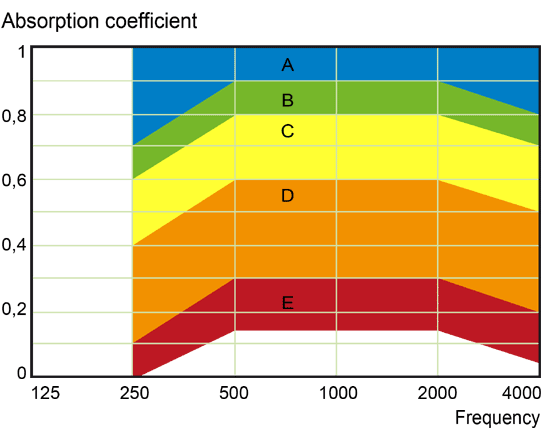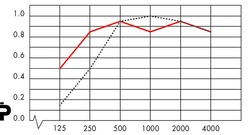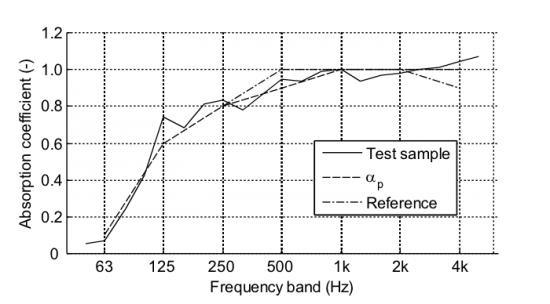Sound class and weighted alpha
As well as ASTM has its terminology on how to express the absorption of materials and how to define this, the International standardization organization ISO got one as well.
When ASTM talks about NRC to express the sound absorption of a material, ISO talks about Sound class and weighted alpha.
NRC is explained in a previous post. If you want to catch up, click here
Just like the NRC, the weight alpha is a calculated average of the material’s ability to absorb sound in a range of frequencies.
While NRC is the arithmetic average of the absorption in four specific frequencies, in ISO 1654 the practical absorption is calculated in the octave bands 250 hz, 500 hz, 1000 hz, 2000 hz and 4000 hz. The practical absorption coefficient is the arithmetic average of the 1/3 octave bands having each and one of those octave band frequencies as their centre frequency. The practical absorption coefficients in the given octave bands are then compared with a set of reference curves in steps of 0,05 where the maximum negative sum of deviations must not exceed 0,10.The weighted alpha is then the reference curve absorption at 500 Hz.
Lost most of you there, didn’t i?
The reason for calculating the practical absorption is because it makes it easier to compare with the reference curve and the reason for going through all the trouble of calculating averages of sets of frequencies is simply because it will give you a more accurate practical absorption. You want to use as much of the available data you have as possible.
The reason for the reference curves looking the way they do are mostly “political” as it has been decided by people with a lot of influence (read the large manufacturers of acoustical ceilings). Theses reference curves happens to fit very well together with the products they supply. Someone might try the “hen and the egg story” by saying that they have actually developed products according to the demands in the standards, but since they had a great influence in what the standards should say, it’s probably the opposite. The standards are written according to the products available through these manufacturers.
Why is this important to understand?
-Simply because most architects rely on these standards to give them the most suitable products for their project. Most architects makes things as simple as just referring to the sound classes A -E, as in the picture below.
These sound classes are defined from what reference curve the product has and in which sector it is located, where A is the highest class and E the lowest.
Make a note of the fact that the sound class does not take any consideration at all to the absorption below 250 hz. This is not a coincidence.
In the previous post about NRC we made pretty clear the importance of having a flat absorption curve within a the complete frequency range including 125 hz, but having good enough absorption already from 125 hz, all the way to 4000 hz is difficult and there are few absorbers that can actually do that.
What i mean is that modern standards on room acoustics (like the Swedish SS25268_2007) says that the reverberation time at 125 hz in a room where you spend a significant time of your day, such as an office, a patient room in a hospital, classrooms etc. shall not exceed the reverberation time at 250 hz with more than 0,1 or sometimes 0,2 seconds.
If you still want to have an A absorber which has a minimum absorption of 0,7 at 250 hz, you’ll need, in most of the normal facilities mentioned above, to have an absorption at 125 hz of at least 0,55 and most likely more than 0,60 to fulfill the standard’s requirements, which in turn means that you need to have a flat absorption curve through the entire frequency range.
As an example the graph below shows the absorption curve for one of the most commonly used tiles ceilings, the Ecophon Focus A
The black dotted curve is with a void depth of 50 mm and the red curve with a void depth of 200 mm (ideal situation).
The 50 mm void installation is a class B absorber with a weighted alpha of 0,70, while the 200 mm void installation is a class A absorber with an impressive weighted alpha of 0,95, but look at the absorption at 125 hz. It is just 0,50 which is clearly not good enough to live up to the standard’s requirements.
As a reference look at this 200 mm void installed Fellert Even Better Silk 39 mm
The practical absorption at 125 hz is 0,60 which is good enough to meet up to what the standard says.
Look out for the next post where we are examining reverberation time and room acoustics.




Leave a Reply